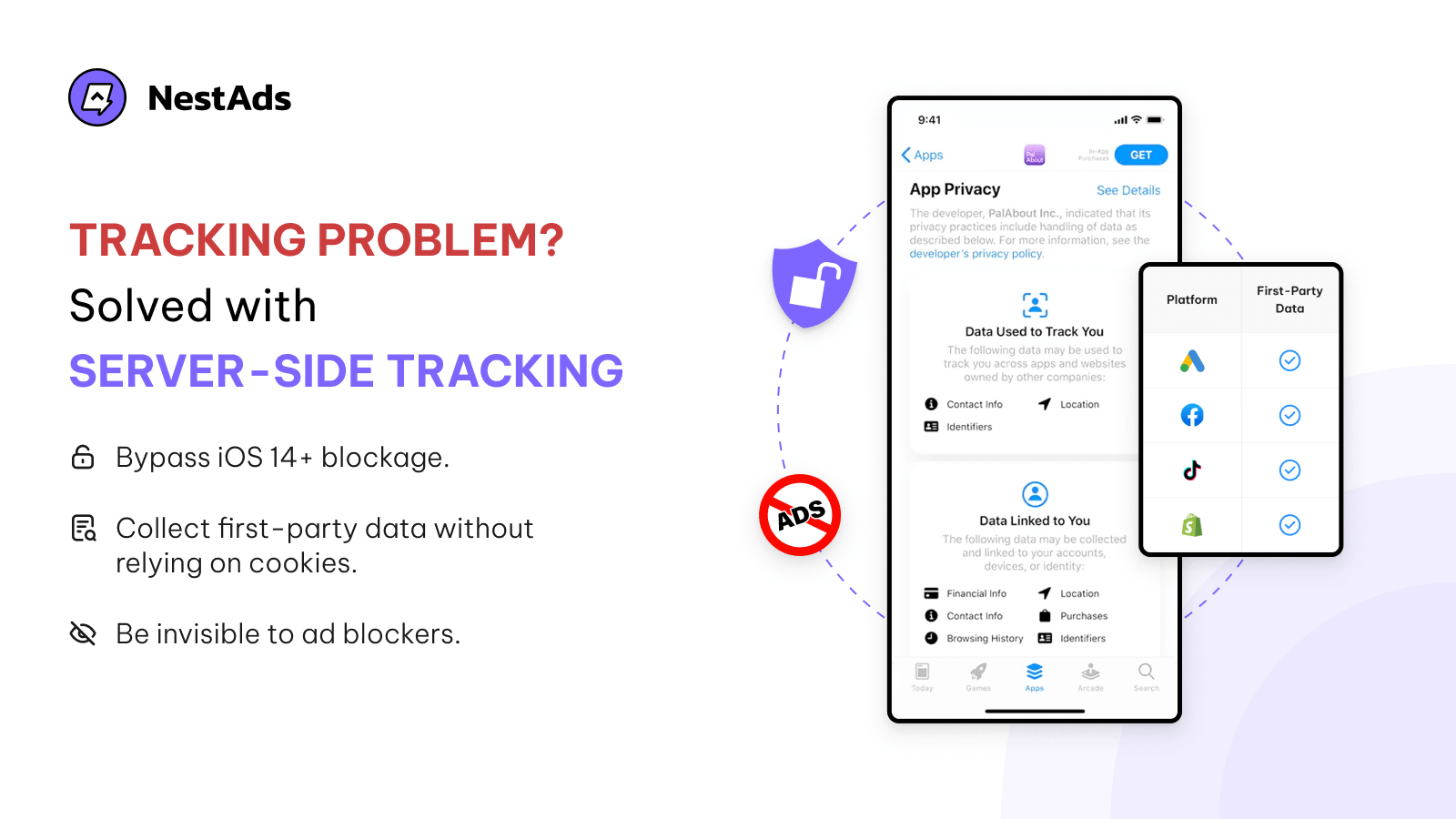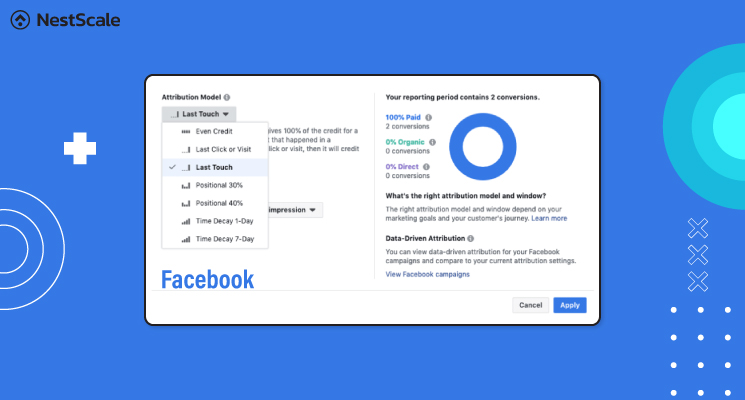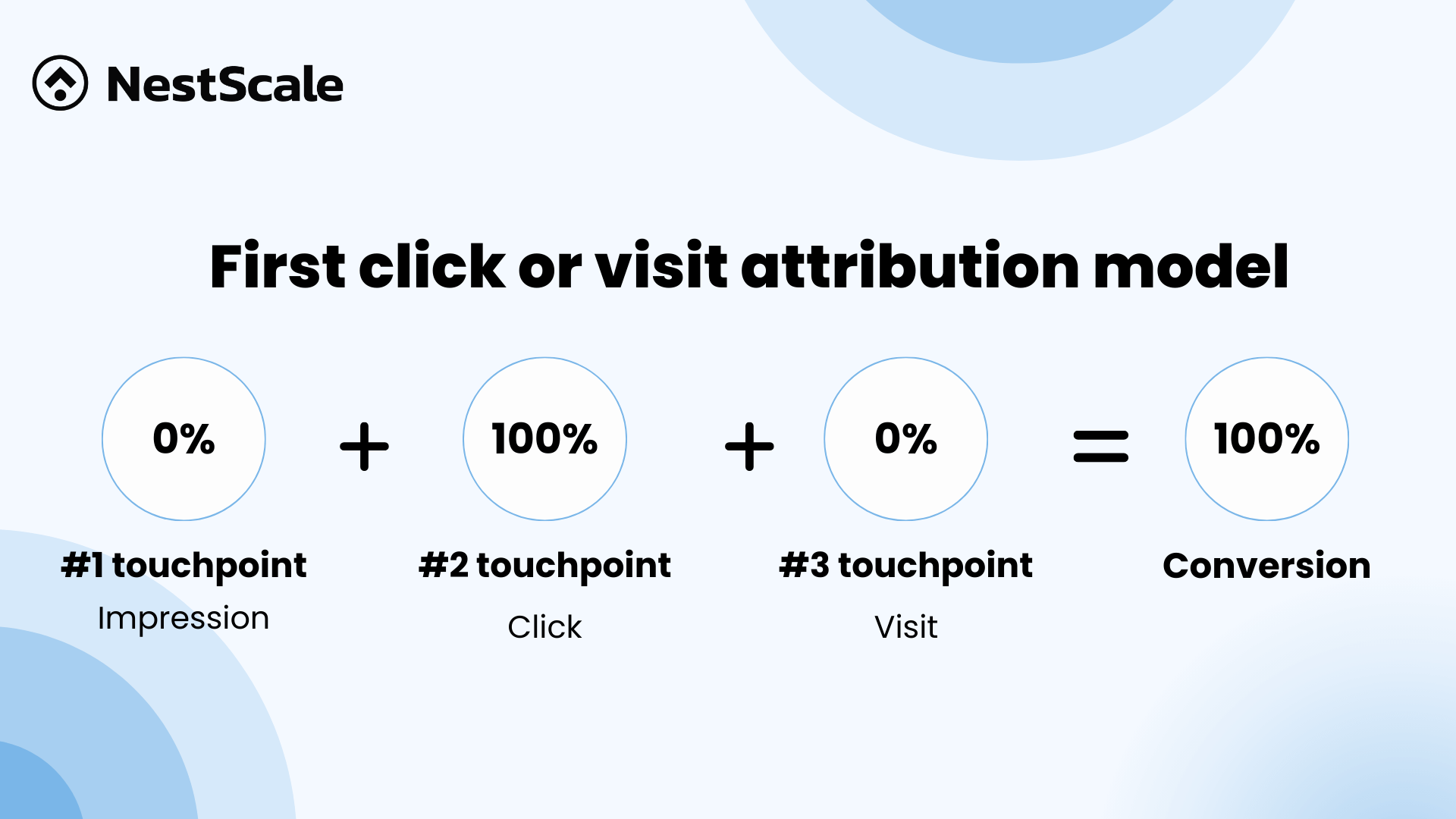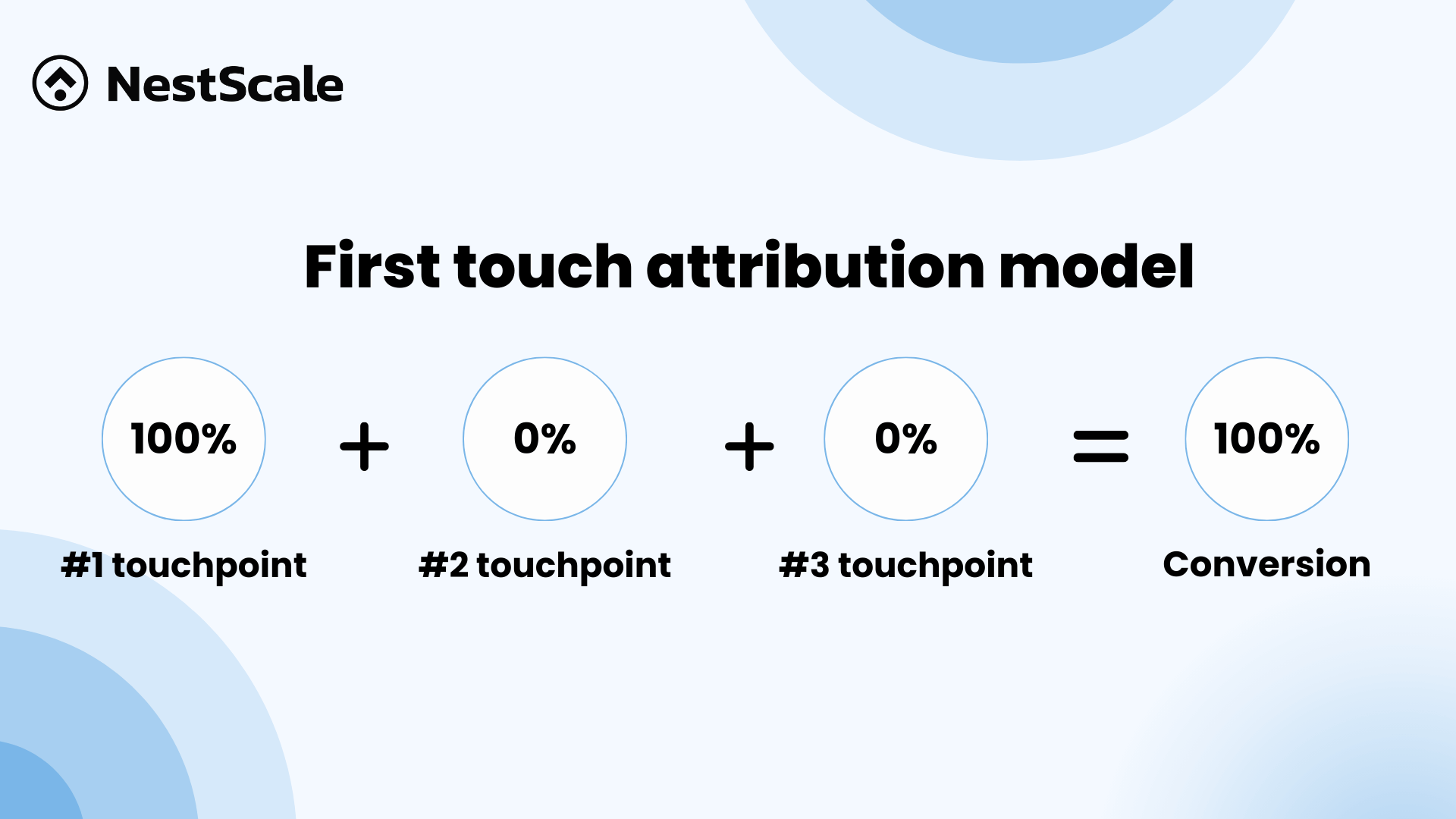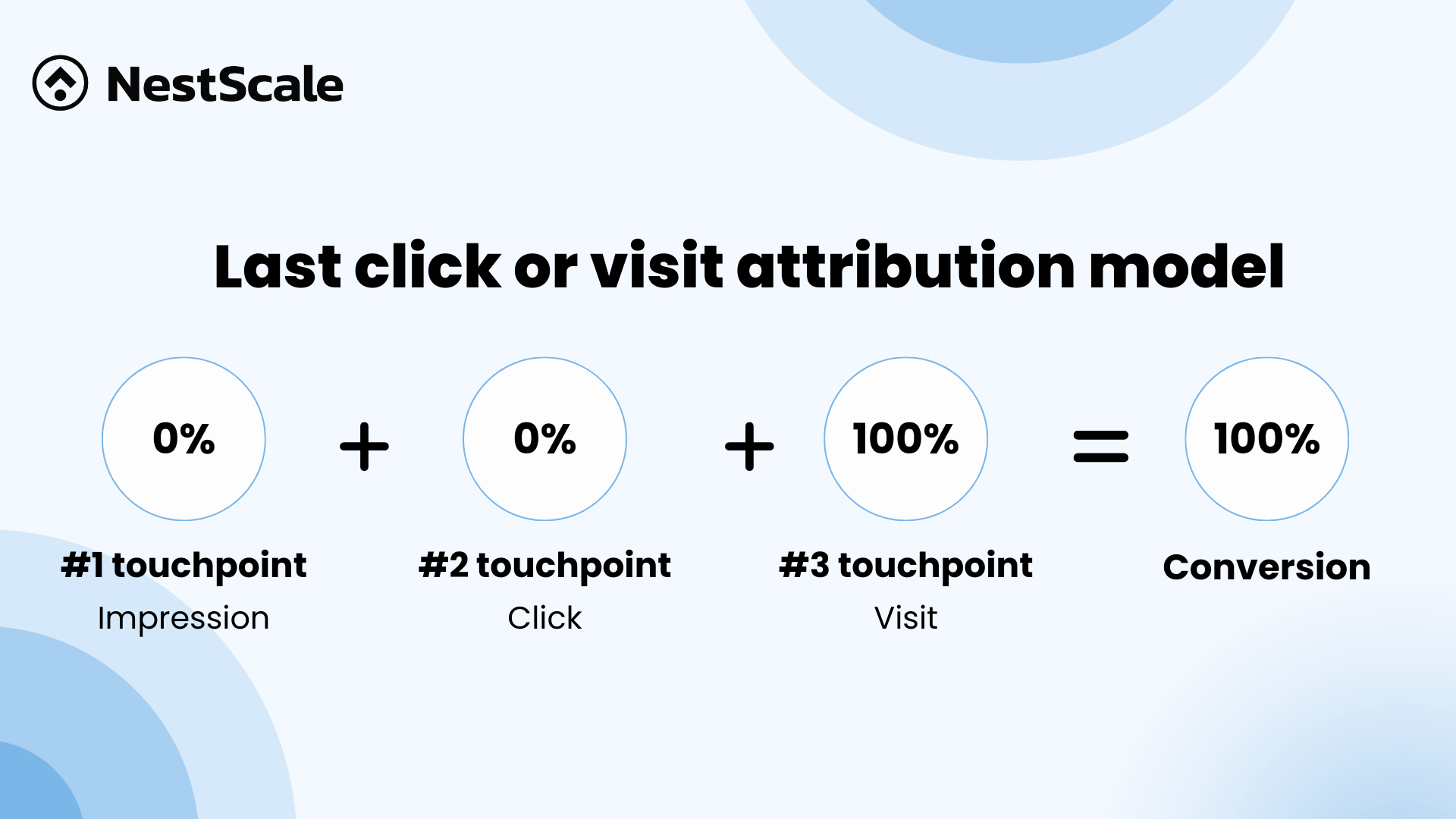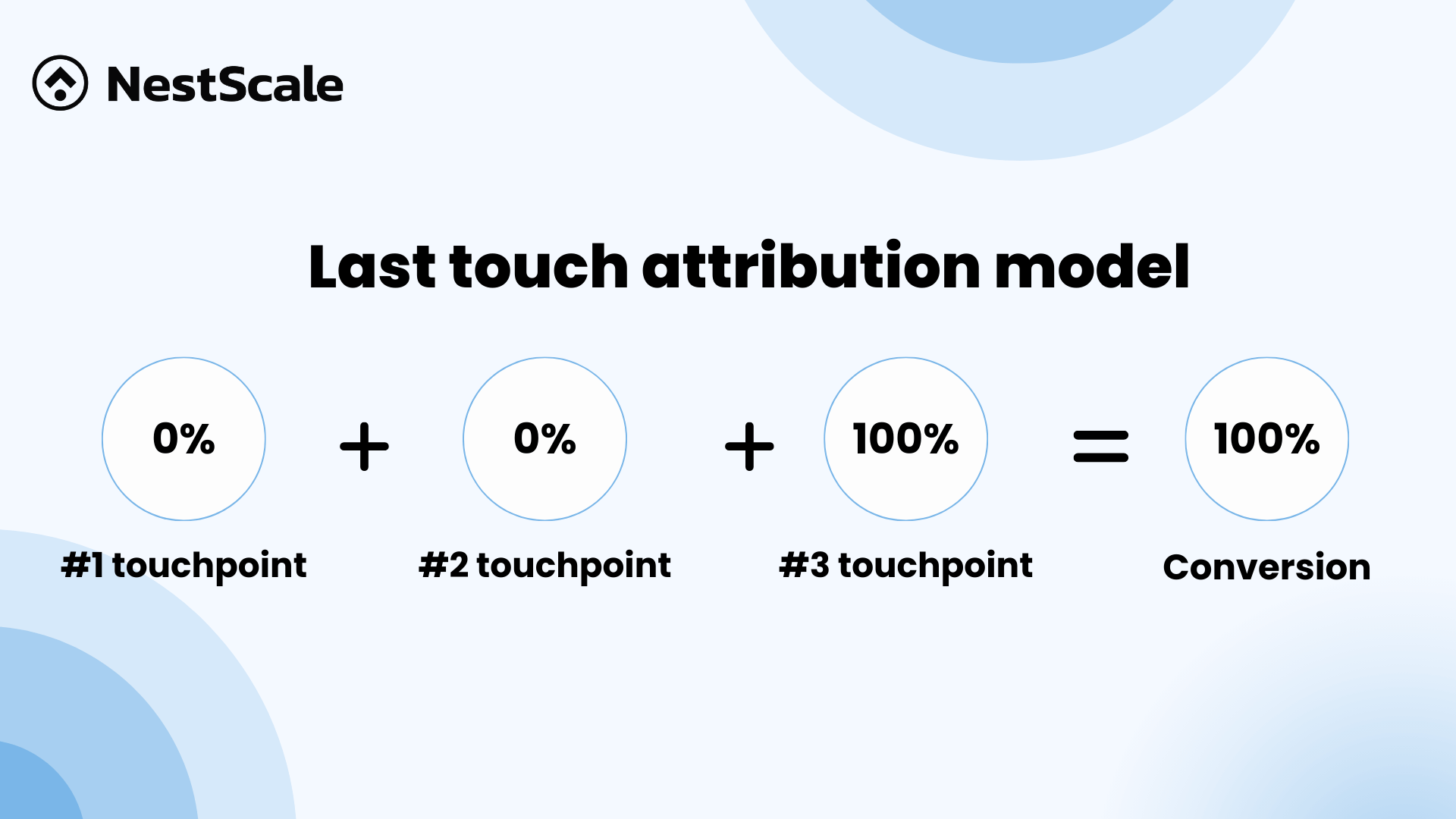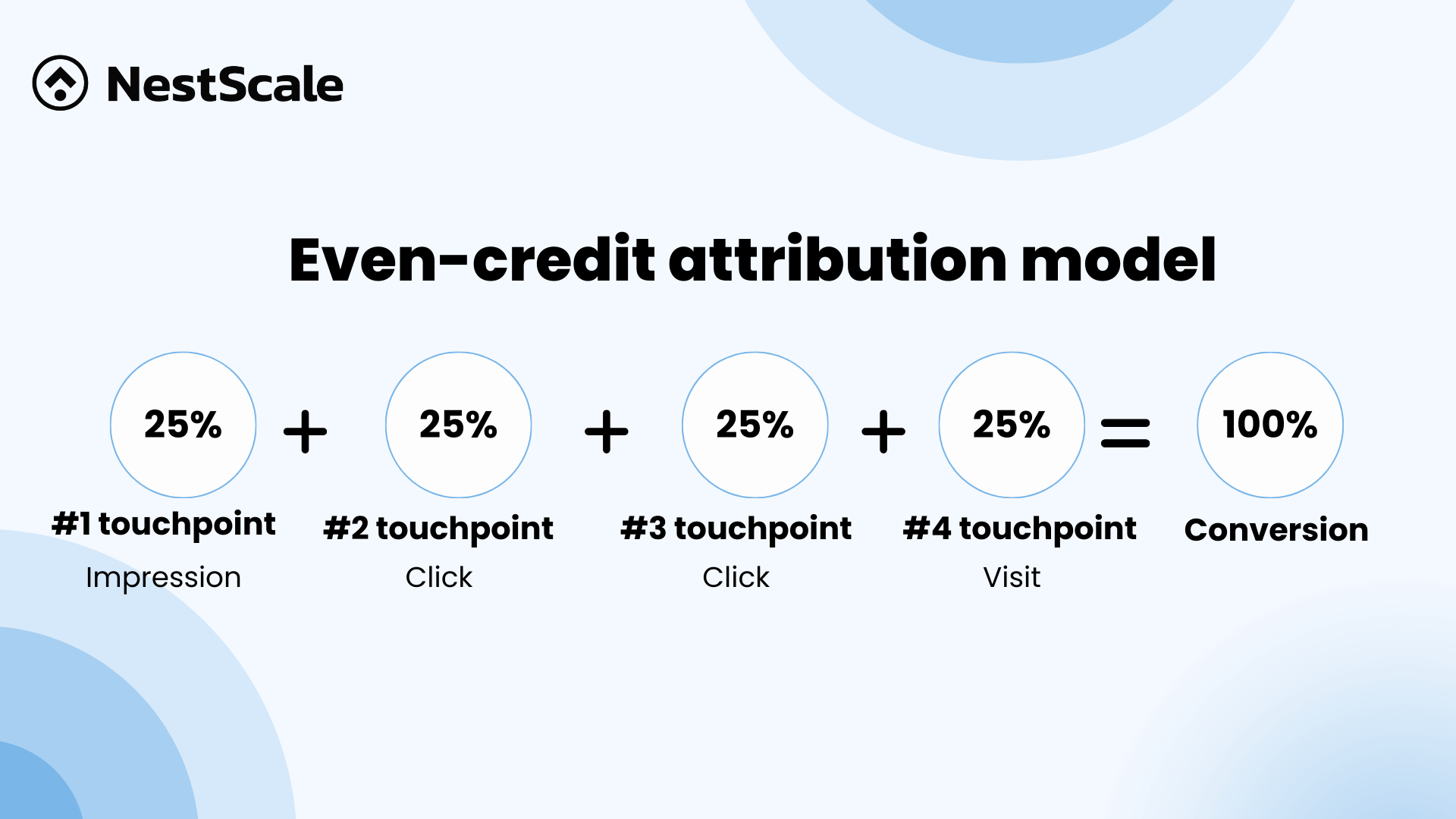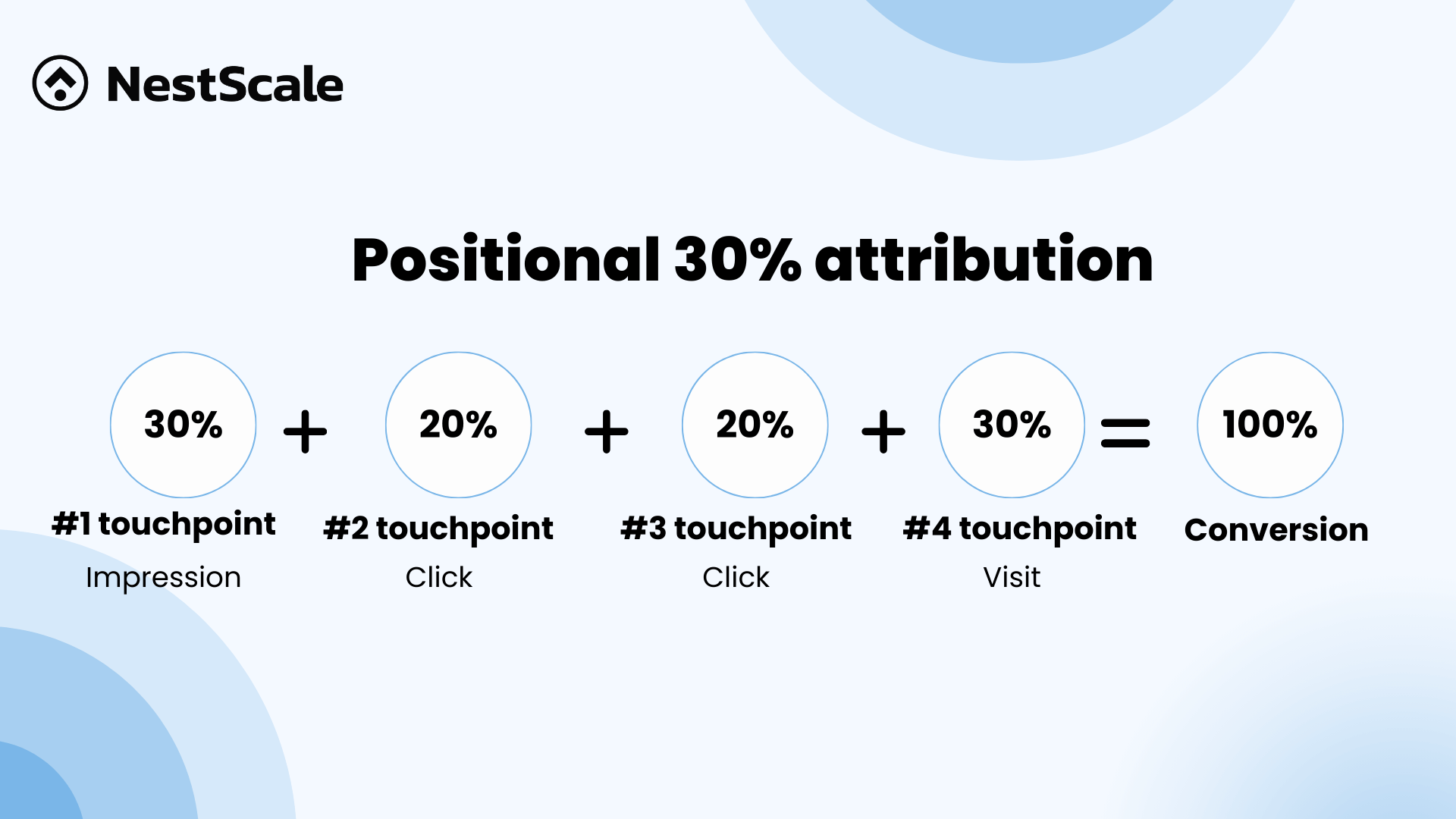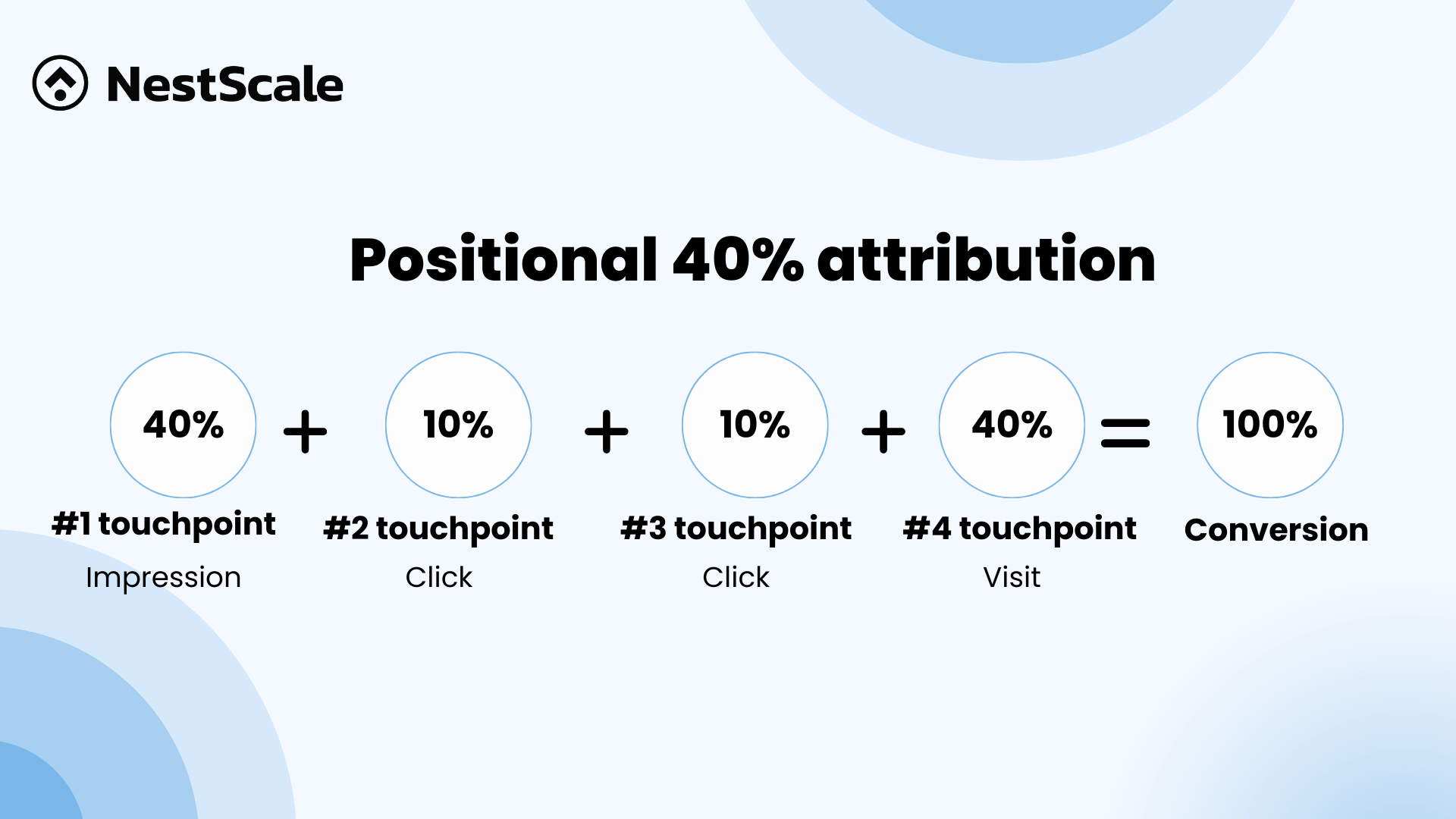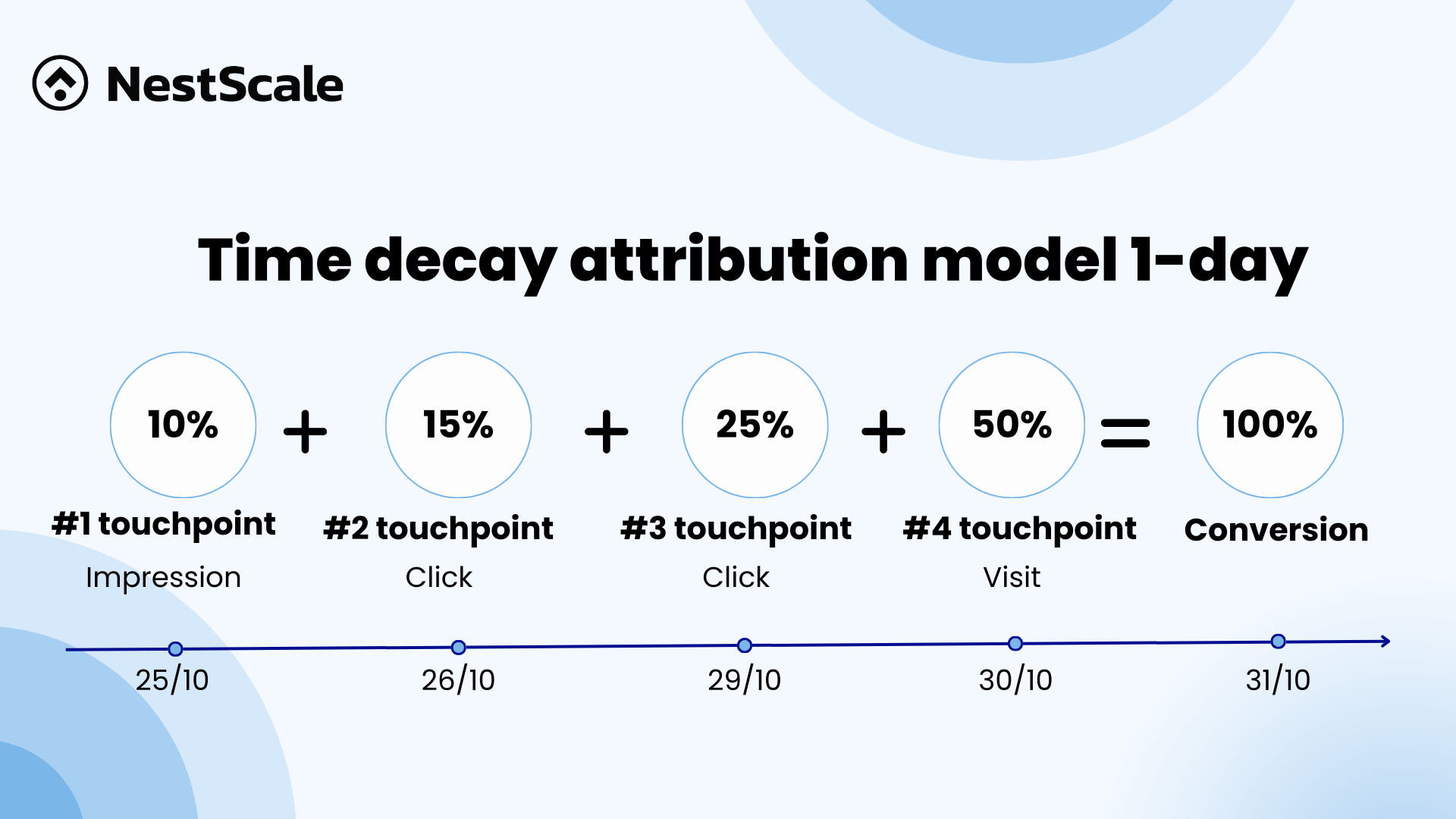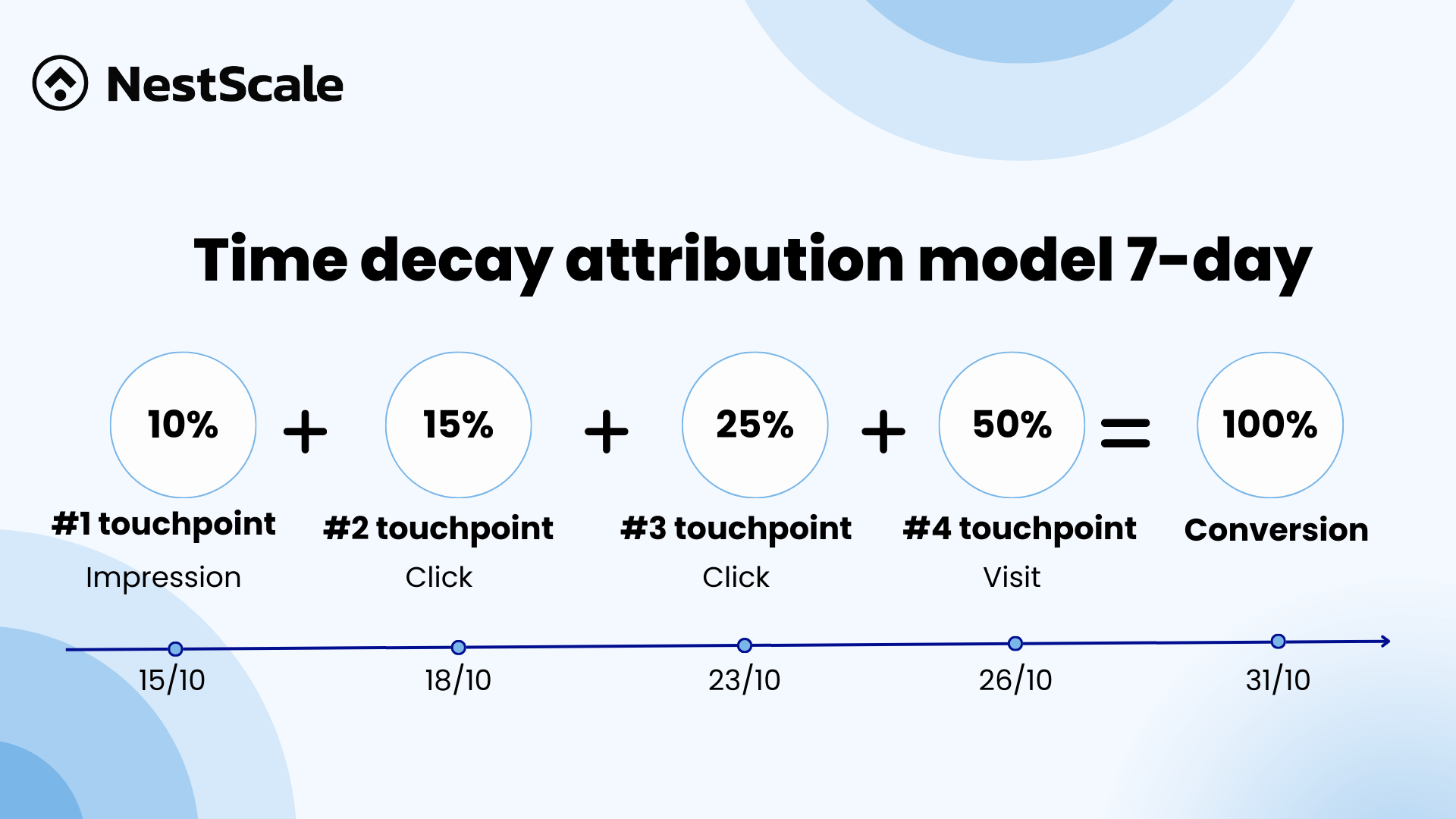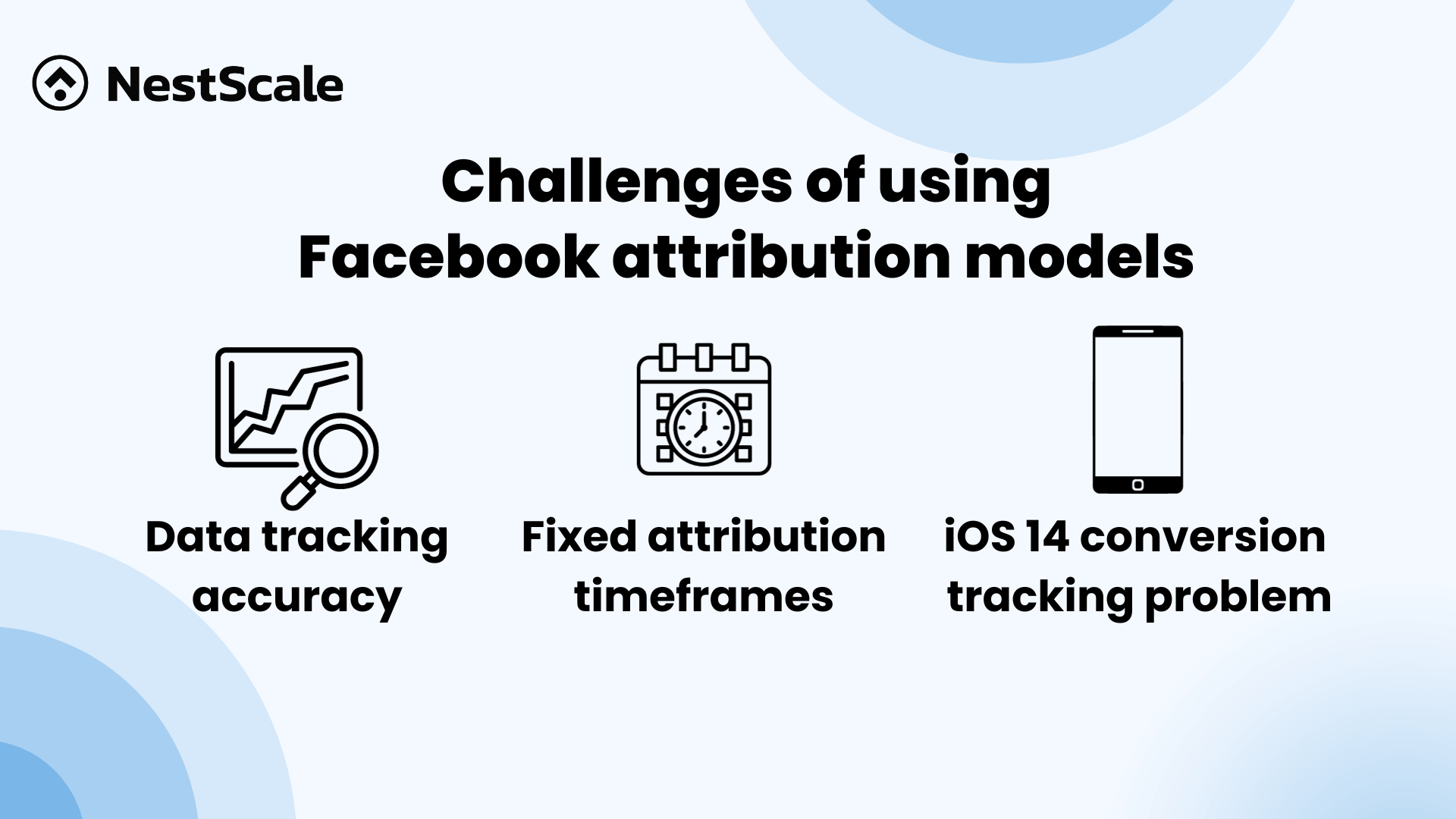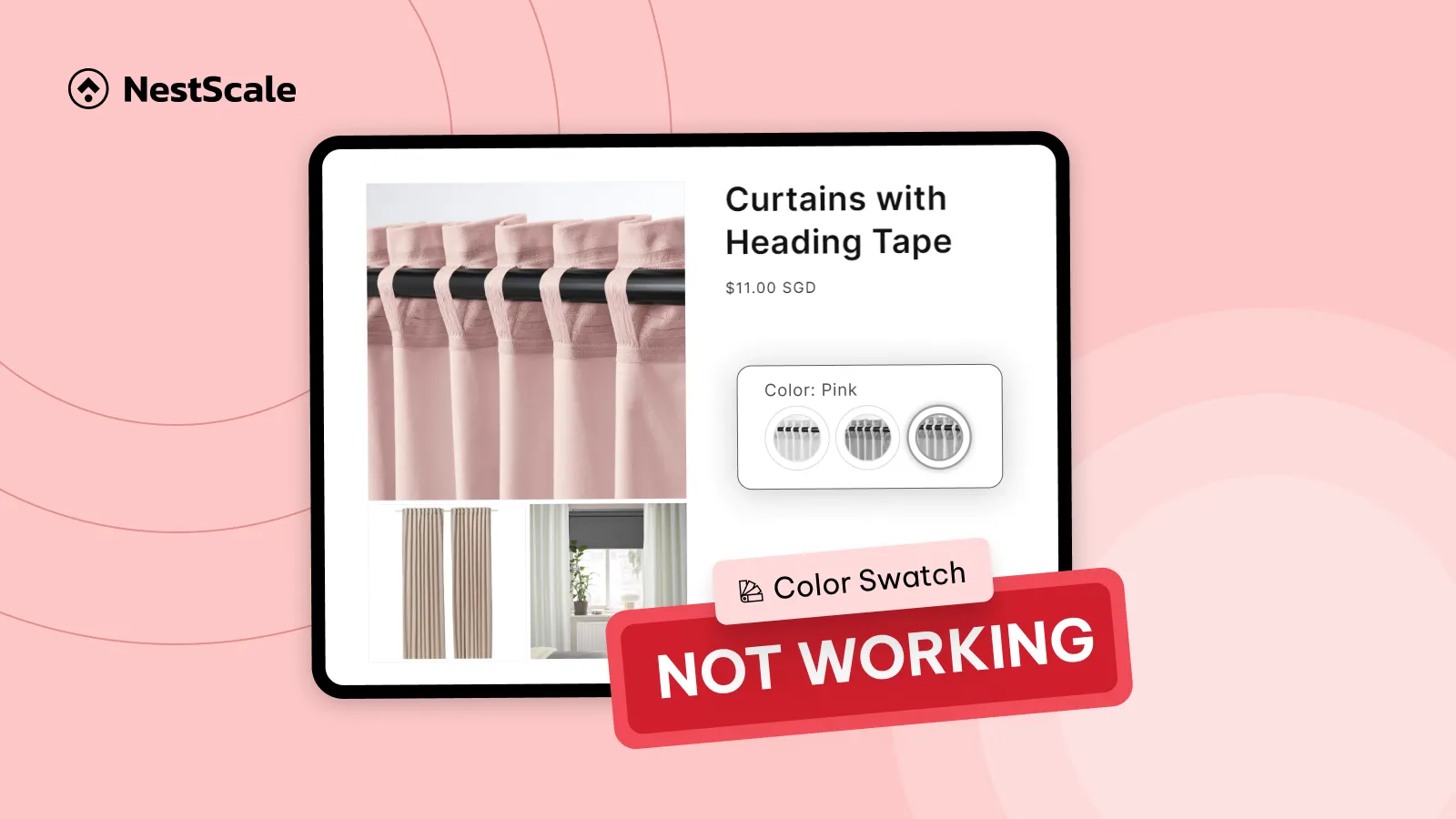More and more businesses are paying attention to using attribution for measuring marketing performance and making data-driven decisions. Facebook Ads, one of the platforms leading the way, provides users with attribution models. This makes Facebook a great choice for businesses looking to enhance their attribution capabilities.
In this blog, we’re about to dig into 7 Facebook attribution models, unveiling their secrets one by one. From breaking down what they are to uncover their unique types and discovering how to select the ideal model for your business – we’re here to make it all crystal clear.
What is Facebook attribution model?
Facebook attribution model is a set of rules or algorithms managed in Meta Ads Manager that determine which touchpoints should get credit for conversions and how much conversion credit each touchpoint should receive. Different attribution models give conversion credit differently.
These models work by analyzing the user’s journey from seeing an ad to completing a conversion. Let’s see how they function step by step:
- Data Collection: Facebook tracks user interactions with ads, including clicks, impressions, and views.
- Conversion tracking: Meta pixels, which are small JavaScript code segments, are used to track when a user completes a desired action, such as making a purchase or signing up.
- Attribution model selection: You choose an attribution model that aligns with your business goals and the customer journey.
- Credit allocation: The chosen model assigns value to each touchpoint based on its perceived contribution to the conversion.
- Reporting: Facebook provides reports that show the performance of your ads based on the selected attribution model.
Types of Facebook attribution models
There are 7 distinct types of Facebook attribution models, each falling into one of two overarching categories: Single-Touch and Multi-Touch attribution models. We will delve deeper into each category to understand how they function and their significance in optimizing your ad campaigns.
Facebook single-touch attribution models
Single-touch attribution models assign all the credit for a conversion to a single touchpoint in the customer journey. Based on the rules that each model uses, this first touchpoint can be an impression, a click, or a visit.
A general rule of all single-touch attribution models to note is that if a click and visit occur within 60 seconds of each other, only the click gets the credit. Now, if a click and a visit happen just 30 seconds apart, they’re grouped as one touchpoint and share 100% of the credit for the conversion.
First click or visit attribution model
In Facebook’s First click attribution model, it’s all about giving full credit to that very first click or visit in a conversion journey. When your conversion path goes like this: Impression, then a click, and then a visit, it’s the click that gets all the credit.
Now, in another scenario, when a click happens and then a visit follows just 30 seconds later, both the click and visit would be seen as one touchpoint, and the model still gives 100% of the credit of the conversion for the click.
| Advantages | Disadvantages |
| – Provides a clear understanding of the first touchpoint that triggered customer engagement. – Easy to implement and explain to stakeholders. | – Ignores the influence of touchpoints encountered later in the customer journey. – Fails to capture the entire conversion path, potentially undervaluing other touchpoints. |
First touch attribution model
The first touch attribution model works quite similarly to the first click or visit attribution model, but there’s a key difference. While the first click or visit model only gives credit to the first click or visit, this model still allows you to give credit to the first touchpoint that is not a click or visit.
For example, if your customer’s conversion journey begins with an impression, followed by a click and then a visit 30 seconds later, the click takes all the credit for the conversion. But, if the journey starts with an impression and there are no clicks or visits afterward, the impression gets 100% of the credit in this model.
| Advantages | Disadvantages |
| – Understand the impact of the first touchpoint on the conversion value. – Easy to measure – Simplify the conversion path, especially if you have a long attribution window or a lengthy consideration period. | – Not let you see the complete picture of the conversion path. – Overlook the impact of other touchpoints, especially if your campaign goal is to increase the chances of consideration and conversion. |
Last click or visit attribution model
On the flip side, the Last click attribution assigns full credit to the last click or visit that happens before a conversion. If your conversion path goes like this – Impression, then a click, and finally a visit, it’s that last visit that takes all the credit for the conversion.
Yet, if that visit happens within 30 seconds after the click, both the click and the visit become a single touchpoint, and they share 100% of the credit for the conversion.
| Advantages | Disadvantages |
| – Simple and straightforward, making it accessible to marketers. – Highlights the touchpoint immediately preceding conversion, which can be useful for optimization. | – Overlooks the contributions of touchpoints that led customers to the final interaction. – May not provide a comprehensive view of the customer’s journey. |
Last touch attribution model
Last touch is the default attribution model when reporting in Facebook ads. This model is like a cousin to the last click or visit model, but it has a cool twist. It gives credit to the final interaction, even if it’s not a click or visit.
So, here’s the deal: If your conversion journey wraps up with a click or a visit, they will get the full 100% credit for the conversion. But, if the last interaction happens to be an impression, it can still score full credit for the conversion.
| Advantages | Disadvantages |
| – Oversimplify all the interactions that contribute to the conversion path – Not suitable for campaigns that focus more on increasing awareness and consideration | – Oversimplify all the interactions that contribute to the conversion path. – Not suitable for campaigns that focus more on increasing awareness and consideration. |
Facebook multi-touch attribution models
Unlike single-touch attribution models, multi-touch attribution models understand that a customer’s journey involves multiple interactions, all of which influence their decision to take the desired action.
Hence, instead of giving all the credit to just one interaction, multi-touch attribution models distribute credit across all touchpoints, giving you a complete view of the customer journey.
In both single-touch and multi-touch models, touchpoints can be various interactions like impressions, clicks, or visits. However, the rules for identifying a touchpoint in Facebook multi-touch attribution models are a little bit different from those of single-touch models.
If a click and a visit occur within 60 seconds of each other, only the click gets credited. If an impression and a click seem related to the same ad and appear within 24 hours of each other, they count as a single touchpoint when assigning credit for a conversion.
Even-credit attribution model
The Even-credit model takes a democratic approach. It distributes the credit evenly across all the touchpoints encountered along the customer’s journey. Each touchpoint is considered equally important, regardless of its position in the conversion path.
Here’s the scoop on multi-touch attribution models. If your customer’s journey includes an impression, 2 clicks, and a visit, each of them gets 25% of the credit for the conversion.
| Advantages | Disadvantages |
| – Equally distributes credit among all touchpoints, acknowledging their collective importance. – Ideal for situations where multiple touchpoints significantly contribute to conversions. | – Might oversimplify the impact of each touchpoint, failing to account for variations in influence. – In some cases, not all touchpoints may contribute equally, leading to potential misattribution. |
Positional attribution model
Let’s talk about the next multi-touch attribution model, the positional model. Here’s how it works: you assign a fixed percentage of credit to the first and last touchpoints, and then the rest of the credit is spread equally among all the other touchpoints. With Facebook, you get 2 options of fixed percentage to choose from for this model:
** Positional 30% attribution
In the Positional attribution model with 30% allocation, we assign 30% of the total value to the first and last touchpoints, and the remaining 40% gets evenly distributed among the middle touchpoints.
Let’s say you’ve got 4 touchpoints in the conversion path. In this case, the first and last touchpoints each get 30% of the credit, and the two middle touchpoints share 40% equally, giving them 20% each.
** Positional 40% attribution
In the 40% Positional attribution model, the first and last touchpoints grab a bigger share at 40% each, and the remaining 20% is divided evenly among the middle touchpoints.
Let’s say you’ve got the same 4-touchpoint conversion path we talked about earlier. In this scenario, the first and last touchpoints get 40% of the credit each, while the other two touchpoints in the middle each get 10%.
| Advantages | Disadvantages |
| – Recognizes the significance of both the first and last touchpoints, providing a more balanced view. – Allows for adjustments in weightage to better fit specific customer journeys. | – Middle touchpoints might receive less credit, potentially understating their influence. – Requires careful configuration and interpretation compared to single-touch models. |
Time decay attribution model
The time decay model looks at the entire conversion journey, but it gives more credit to touchpoints that are closer in time to the conversion. Facebook provides you with 2 options for the Time decay attribution model to measure your ad performance:
** Time decay attribution model 1-day
The Time decay attribution model with a 1-day window prioritizes touchpoints in the last 24 hours before conversion. Suited for businesses with quick decision-making, it follows the recency principle by emphasizing recent interactions that often lead to conversions.
For instance, the touchpoints that happened one day before the conversion get 50% of the conversion credit. The touchpoints that happened two days before the conversion get 25% of the conversion credit.
** Time Decay attribution model 7-day
In contrast, the Time decay attribution model with a 7-day window extends the influence period to a week before conversion. Recognizing longer and more complex journeys compared to the 1-day model, it considers the cumulative impact of interactions over time. This model suits businesses where conversions result from a series of touchpoints building up over a week.
In another way, the touchpoints that happened 7 days before the conversion get 50% of the conversion credit and the touchpoints that happened 14 days before the conversion get 25% of the conversion credit.
| Advantages | Disadvantages |
| – Gives more credit to touchpoints closer to the conversion event, acknowledging the impact of recent interactions. – Suitable for cases where recent touchpoints are more likely to lead to conversions. | – May undervalue the importance of initial touchpoints in the customer journey. – Ignores the potential long-term brand-building effects of earlier interactions. |
Now, you’ve grasped all the Facebook attribution models and their pros and cons. For specific configurations within a Facebook attribution model, you can learn about Facebook attribution settings to get some useful and actionable information on optimizing your settings for maximum results.
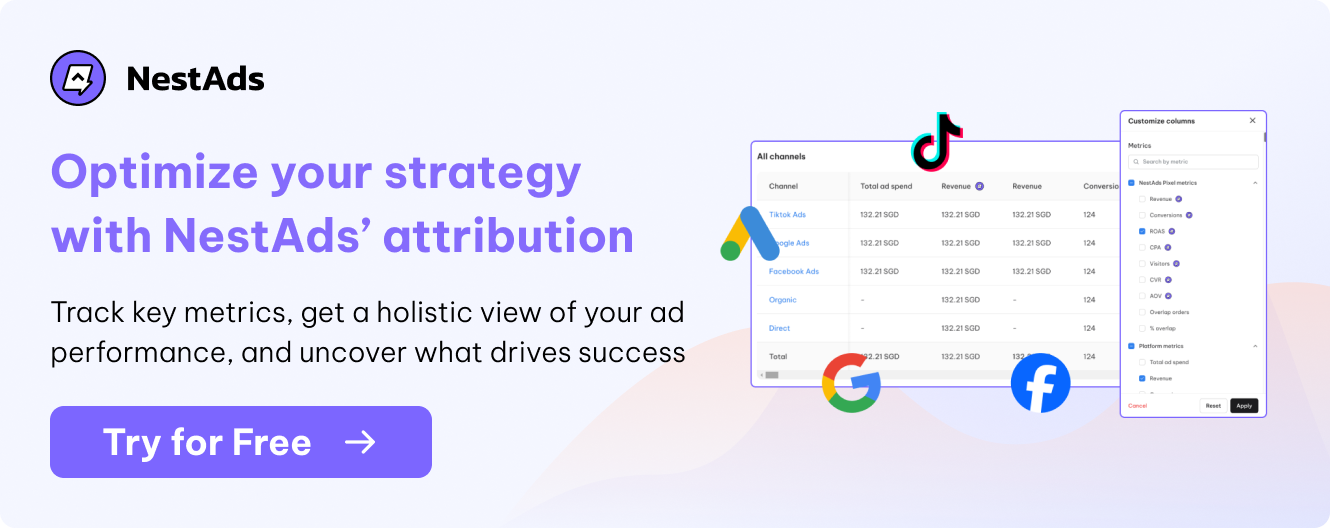
How to choose the best Facebook attribution model?
Are you confident to choose the right attribution model for measurement? If you’re still a bit unsure about how to put them into practice, here are some tips:
- Consider business goals and objectives: If your goal is to enhance brand awareness, choose the First-Click Attribution model. For lead generation, Even credit and Positional attribution can be more effective. Otherwise, Last click or visit and Last touch attribution is often the way to go when your main goal is conversion.
- Understand customer journey complexity: Remember to analyze the typical path your customers take before making a conversion. Also, based on the length of the sales cycle of your products, you should consider using single or multiple-touch attribution models for measuring.
- Data availability and quality: If you have robust data on user interactions, consider more complex models like Even-credit or Positional attribution. For businesses with limited data, simpler models are more practical.
What are the challenges of using Facebook attribution models?
Facebook attribution remains a popular tool among digital marketers for measuring their marketing efforts because it’s easy and convenient. However, it still has a few limitations you should be aware of before selecting it.
Challenge 1: Data tracking accuracy
One big issue with the Facebook Attribution Model is that it’s struggled to get accurate data. This happens because it relies a lot on third-party tags and cookies, especially on Apple devices, where they’re making it tougher to track things due to privacy rules. As a result, marketers face challenges in obtaining first-party data and exact info about what people are doing on their websites.
Challenge 2: Fixed attribution timeframes
Another tricky part is that the Attribution Model sticks to fixed timeframes for measuring how well ads work. The problem is, that these timeframes might not match up with how real people behave. In today’s world, customers take action at different times, but this model doesn’t adapt. So, it can give wrong ideas about how effective ad campaigns are.
Challenge 3: iOS 14 conversion tracking problem
When Apple released the iOS 14 update, it caused a big headache for advertisers using the Facebook Attribution Model. Apple’s focus on privacy made it hard to track conversions, even when people buy stuff. So, other ad platforms using third-party pixels can’t do a good job of tracking sales accurately.
Improve your attribution experiment with NestAds!
If you’re feeling hesitant about the challenges mentioned earlier, we’ve got a solution for you: NestAds. It’s our marketing attribution tool that can tackle all the issues you might face with Facebook attribution models. Now, you might be wondering, how exactly does NestAds do this?
It collects 1st party data directly from your web server, ensuring precise tracking while respecting user privacy. Plus, it effortlessly sidesteps the challenges posed by iOS 14, keeping your ad-tracking process smooth. The best part? You get to choose the attribution windows that suit your unique needs. No more rigid timeframes – it’s your insights, your way. Say goodbye to guesswork and hello to confident optimization!
Eager to access valuable customer insights with ease and accuracy? Give NestAds a try today!
